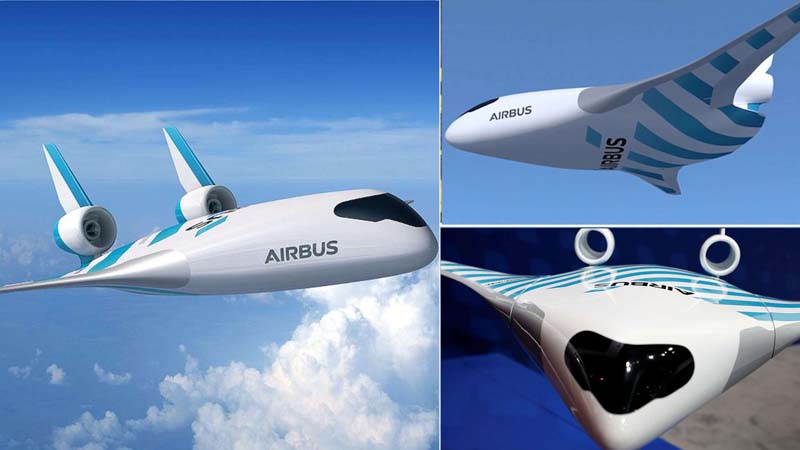Airbus unveiled a model of a new blended-wing-body aircraft demonstrator it has been secretly test flying in central France since June 2019. Measuring 2 meters long and 3.2 meters wide, the demonstrator—dubbed “Maveric”—has a surface area of about 2.25 sq m. Airbus says the design carries the potential to reduce fuel consumption by up to 20 percent compared with today’s single-aisle aircraft.
Speaking during the show’s opening day, Airbus engineering boss Jean-Brice Dumont explained that a secondary benefit centers on opening new possibilities for propulsion system type and integration as well as a versatile cabin.
Although not new to the aerospace industry, the blended-wing concept shows more promise than ever due to advances in weight reduction and flight control technology that raises the potential for better stability, said Dumont. The time has come, he added, to make a serious effort toward scaling the application for passenger-carrying use to meet environmental targets such as a 50 percent industrywide reduction in CO2 emissions by 2050.
“The concept of a Skunkworks or [flying wing] demonstrator was invented a while ago,” conceded Dumont. “But sometimes we need to reinvent ourselves. I really think that demonstrators accelerate [advancements]. Predevelopment of new technologies is key.”
Launched in 2017, the two-and-a-half to three-year project centers mainly on testing flight controls. So far the testing has helped engineers better understand flight controls in real conditions, said Dumont, who added that results have proved encouraging enough to proceed toward more extensive study. Other imperatives that experts still need to tackle include safety, manufacturability, airport access, and maintenance, said Dumont. “Let’s be very clear; we are studying an option,” he noted. “But with what we’ve done, we’ve already learned a lot. It has clearly helped us understand the flight behavior, which is the core of what we need to study such a disruptive configuration in real conditions.”
While conventional aircraft designs have proved exceptionally stable, delta wings have not, so developing a less-stable formula raises some fundamental questions about the extent to which flight controls would need improvement. According to Dumont, such development cannot amount to a so-called “moon shot.” Other questions that still need answering include optimal engine placement and opportunities for distributed propulsion.
Dumont said the next step toward the development of an actual production airplane centers on increasing scale, something for which he cannot pinpoint timing. “The next step would be flying at a larger scale,” said Dumont. “But I wouldn’t tell you what because I do not know.”
He added the eventual resulting aircraft would naturally more likely succeed an existing narrowbody than a larger aircraft. “It’s principally a stable formula. Now we need to learn more,” stressed Dumont. “We will need to simulate a lot before we really learn something about scalability. Generally, for this kind of aircraft, you’d better start small. I’m not telling you Airbus’s intention; I’m telling you the basic principles of design. But it will more likely be the successor of a smaller aircraft than a very big one.”

